Pull-on figure skating skirts are cute garments to wear to practice. They're also fun and easy to make - here's everything you need to know!

Pull-on skating skirts are a fun and handy garment that some of us - especially those of us who are a bit “old school” - like to wear for skating practice.
Rather than being a full figure skating dress, these are basically a waist-down skating dress. You wear them over tights on the bottom, and can wear them over any body suit you’d like.
Skate warm? Skip the bodysuit, go for a sports bra and a T shirt.
These skating skirts give you a lot of flexibility in your wardrobe!
I used to be more about practice dresses than pull on skirts, but would make these especially when it came to test days.
I had a standard uniform of black tights, black pull on skirt, and a white turtleneck. If it was especially cold, I’d toss on a sweatshirt or wrap sweater.
They don’t take up a lot of space in your skate bag, and don’t get sweaty - so you don’t have to wash them often!
Anyway, lots of info to address, so let’s get to it!
(Note: There is a video tutorial of this at the end of the post, though it doesn't cover anywhere near as much info - just the actual construction!)
What You Will Need
For a more complete listing of what supplies and tools I recommend having on hand in general - and more specifics about the recommendations here - see my post Spandex Costuming Tools & Supplies.
For this specific project, you’ll need:
Supplies
A Pattern
I’ve yet to see any patterns for this style of skirt, but I wouldn’t doubt they exist somewhere, maybe as a specialty, boutique brand on Etsy.
That said, you can start out with any bodysuit pattern or - ideally - skating dress pattern that you like.
The nice thing about a skating dress pattern is that it’ll already have the cut line for the skirt established.
Kwik-Sew 2004 is the pattern I started with WAY back in the day. The skirt placement line was terrible - as was the skirt - but the fit was good and those issues were easy to fix. (Altering the placement line, just drafting a skirt from scratch). The pattern is also pretty hard to find these days, so I'm not sure why I'm mentioning it, LOL.
In general, I do recommend the older Kwik Sew patterns for anyone getting started. Definitely make a practice run in a cheap fabric to see what you think of the skirt / placement lines, before using your good fabric.
The thing is, the patterns were SUPER easy to use, and weren't overwhelming in the way that some of the other -more current - options can be. Also - skirt placement aside - the fit is a really good start.
You can sometimes luck into finding Kwik Sew patterns on Amazon, but you may need to try some different search terms. "Skating dress" doesn't bring up as many hits as "kwik-sew leotards pattern skating" does, for instance. Even then, you ave to scroll a bit before you come to the listings for the K3502 or 2178 patterns, tho.
Etsy and Ebay are also good options for hunting down these old, out of print patterns.
Beyond that, Jalie Patterns is a great option. They offer both hard copy patterns, as well as downloadable PDF patterns.
Just take your time with Jalie patterns - the fit is generally good, but each pattern has a TON of sizes, and can be confusing for beginners.
Can't find a skating dress pattern? Get a well-fitting bodysuit or leotard pattern!
Exam Table Paper
You can sort of freehand your cut without using exam table paper as pattern paper, but I find it handy.
Plus, you’ll have a pattern for next time, that you can either use as-is if you loved it, or adjust if needed!
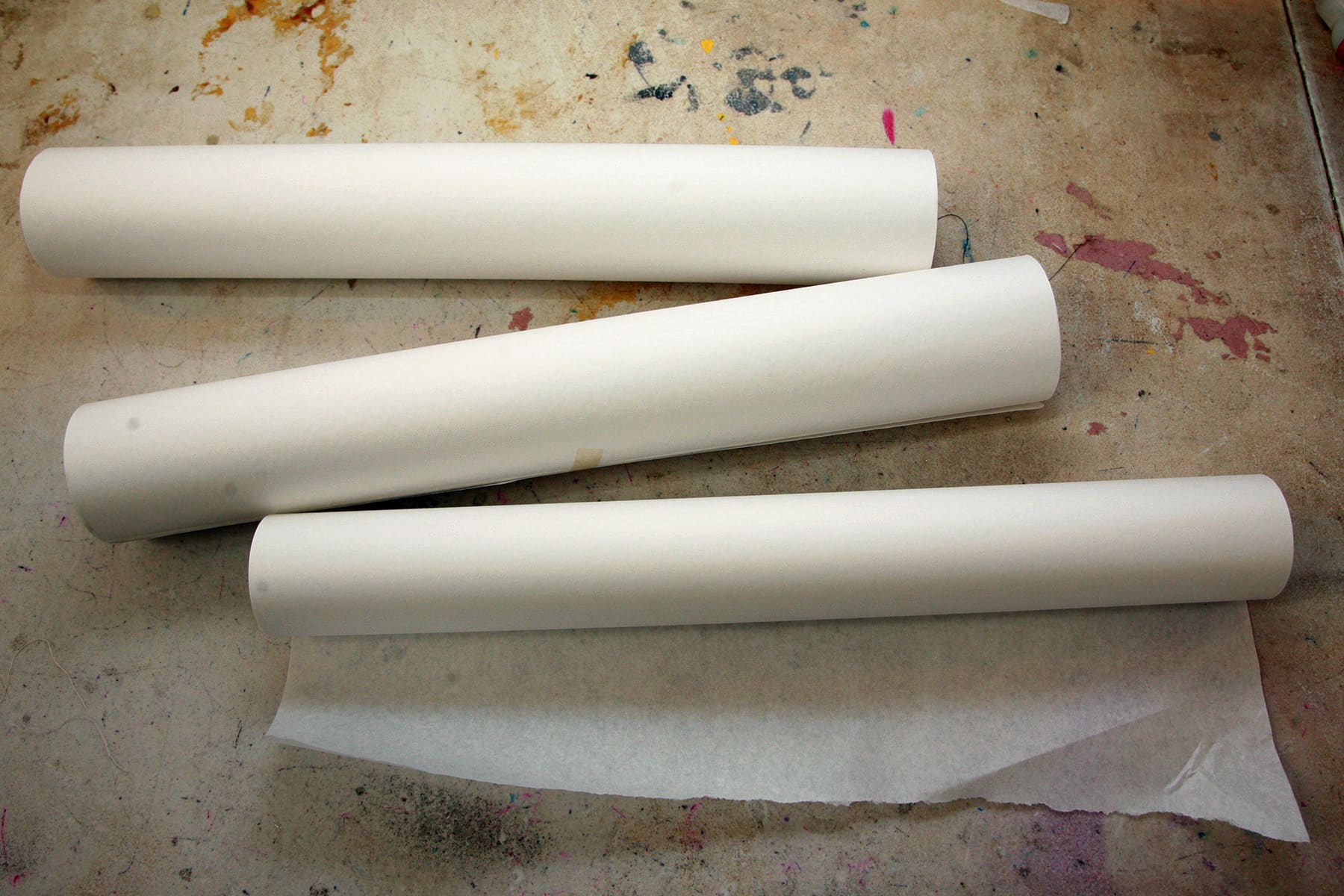
Fabric
I usually make these in the same fabric for the entire thing, unless I’m doing more than one skirt.
If doing multiple layers of skirts, I’ll usually either have a second colour for the under skirt, or do both skirts in a matching mesh.
I recommend a good, strong 4 way stretch nylon lycra / tricot / milliskin spandex.
If you really have your heart set on one of those digital print poly fabrics, I’d do it just as the skirt - I’m not a fan of using it for the base body of garments.
That said, you CAN usually use them as the body, I just generally prefer something with a bit more ... body?.. to it.
Generally speaking, I do NOT line these pull on skating skirts - they really don’t need them, when you’re using a good quality nylon spandex.
If you’re using a thinner fabric- like those digital polyester prints - for the brief/yoke parts, you can use some Odif's 505 Temporary Fabric Adhesive to bond the outer fabric to some lining if you’d like.
Again, not *necessary*, but it will make it feel a bit more durable.
Thread
You’ll want a matching thread for the structural seams, and either a matching or contrasting thread for the hem.
See my supplies post - linked above - for more details on thread choices. The thread you use makes a HUGE difference!
Elastic
I use a ⅜" Braided White Elastic for both the leg openings and the waist elastic.
If you’re sewing for a very, very tiny skater, you can use a more narrow one if you like.
Spray Adhesive
If your skirt design involves any applique (my demo one here did), you’ll want some Odif's 505 Temporary Fabric Adhesive.
(More on applique in a bit!)
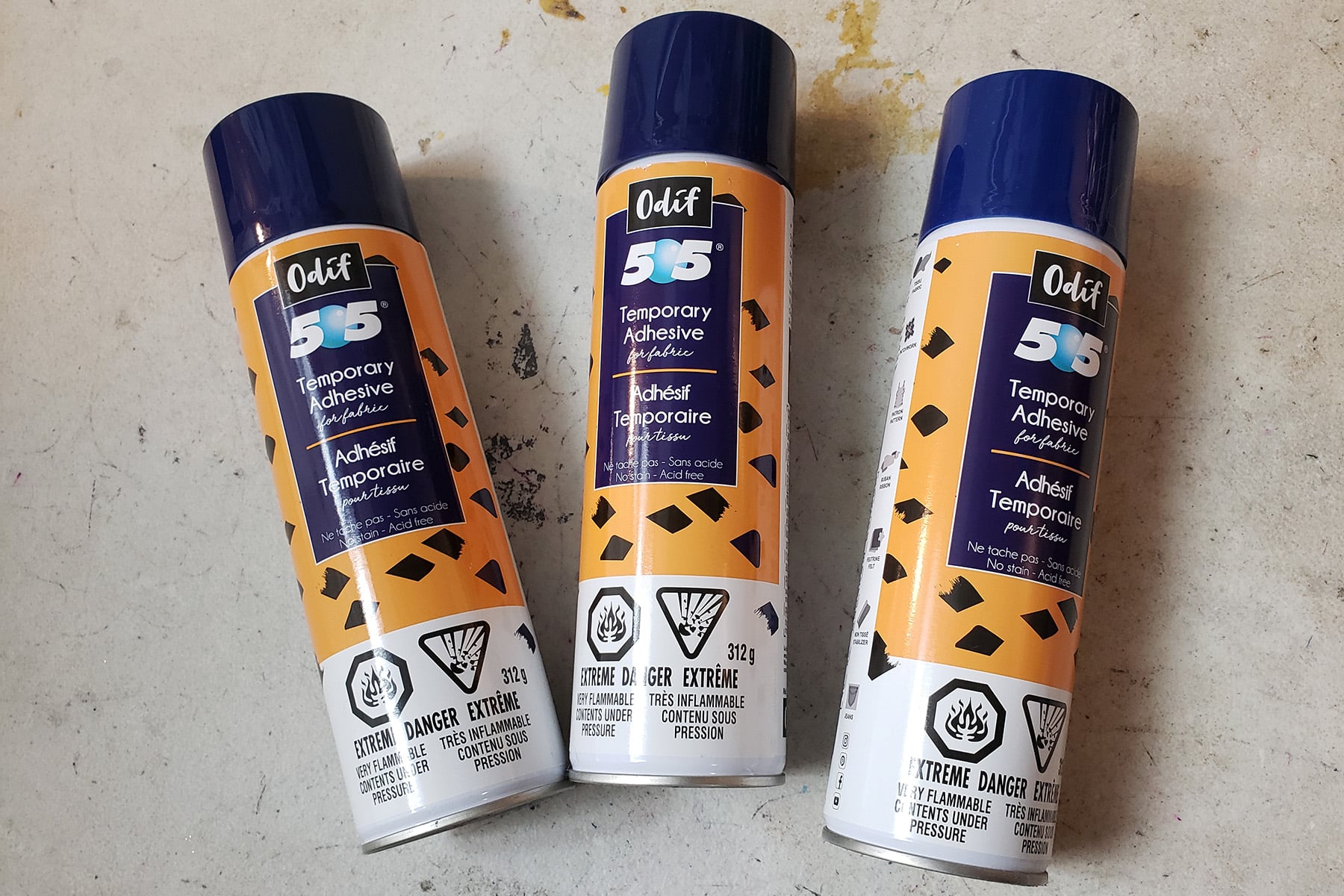
Tools & Equipment
Sewing Machine
If you don’t have a serger, you can sew this project on a normal sewing machine - with a straight stitch and zig zag - start to finish.
It’s how I did it when I first started making skating costumes, and it works fine. My stuff held up to ME, after all - and I’ve always been brutal on my costumes!
If you do have a serger, you can do almost the whole thing with the serger, but I do like top stitching the elastic with a regular machine.
Just be sure to use stretch needles when sewing spandex - always! I tend to use the Schmetz Stretch Sewing Needles, as they're the easiest to find. That's important, as I go through a LOT of needles!
Scissors
You’ll want a nice, sharp pair of scissors for cutting the spandex.
Personally, I love Fiskar scissors - the spring loaded "Easy Action" scissors, especially.
I have a TON of them, and I’ve been using the brand/style for almost 20 years at this point!
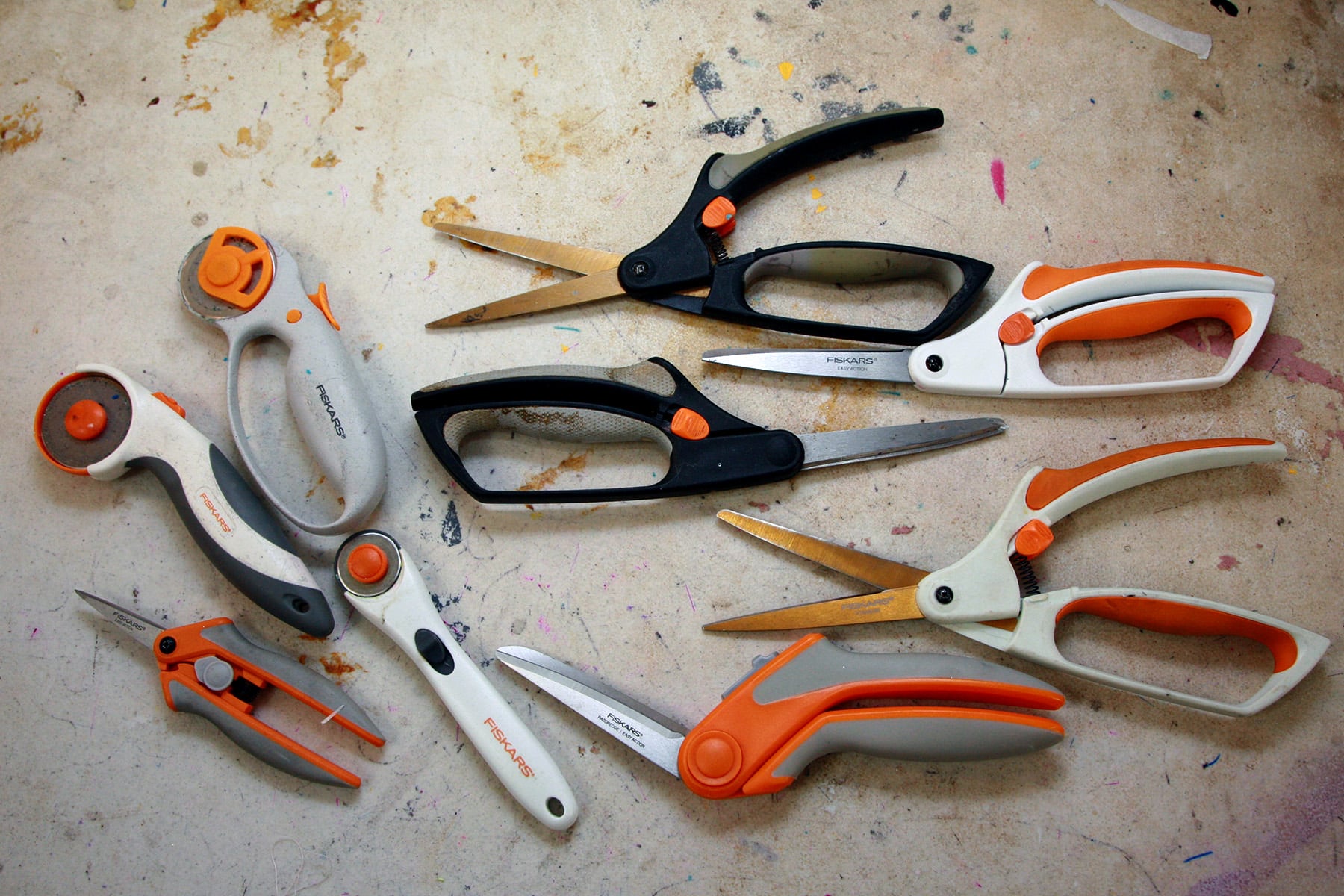
Patterning Figure Skating Skirts
Generally speaking, you’ll want to use a figure skating dress or bodysuit pattern for making these skirts - I haven’t seen any specific patterns to make this style.
That said, the adjustment from a skating dress pattern to a skirt pattern is incredibly easy - I’ll get to that in a minute.
There are 3 main parts to a practice skirt - the briefs, the yoke (waist band), and the skirt itself.
The briefs and yoke should definitely start as the same pattern, but the skirt can be the either the accompanying skirt pattern (if using a skating dress pattern), a different premade skirt pattern, or a drafted-from-scratch pattern.
Briefs and Yoke
Before making the style adjustments to convert your pattern to a pull on skirt, make sure your base pattern is well fitting.
See my posts on How to Measure for Spandex Costuming and Basic Pattern Alterations to get started.
For a Skating Dress Pattern
Put a piece of pattern /exam table paper over the master pattern of the skating dress bodice you’re working from, and trace it from the chest down.
On your new bodice pattern, draw a line that is perpendicular to the centre fold/ centre back seam, and - on the side seams - end a few inches above the skirt edge.
I'll usually do it right at the natural waist (smallest part of the waist on the pattern), but you can go up or down from there - a bit - as desired.
This will be your front yoke piece.
Use this front yoke piece to determine where to draw the new waist line on the back piece.
(Use that front piece as a guide to determine where the top edge will start at the side seam of the back pattern piece, and draw your line straight across the pattern there.)
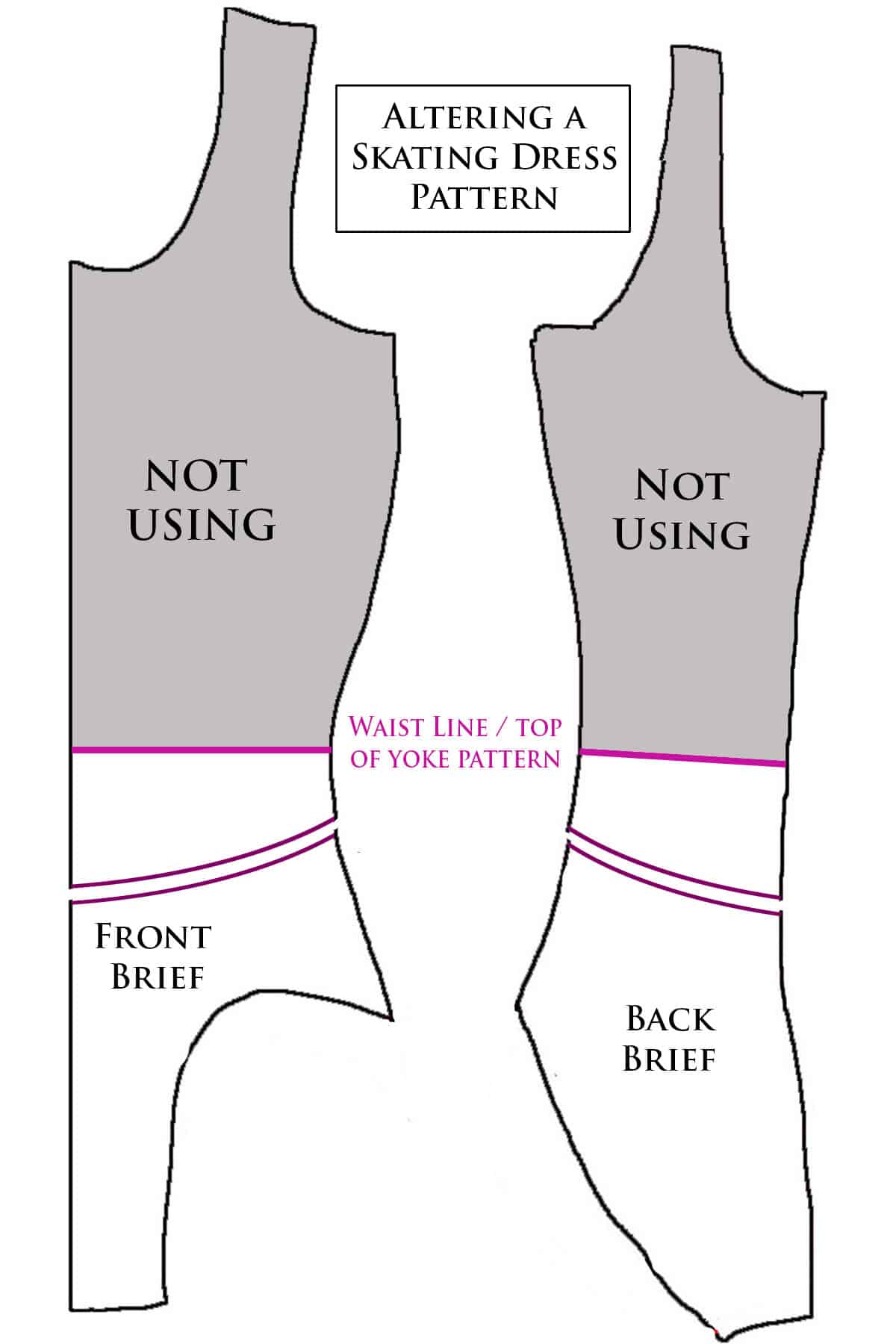
Once you have this line established for both front and back, double check that your new bodice / yoke seam lengths match up - side front yoke to back side yoke. (The center front and center back lengths do not have to match)
If you're happy that the new side seam lengths are good, add an elastic allowance to your top edge.
That is to say, draw a new line that is the same distance away from that top edge, as your elastic is wide.
If you're using ⅜" wide elastic, that line will be ⅜" away from the first waist line drawn. (If you’re not using ⅜" wide elastic, use whatever width your elastic is, in place of the ⅜").

Cut your new pattern pieces out, using the new, outer edge of that seam allowance as the cut line.
For a Bodysuit Pattern
Use the instructions above for getting the basic body of your pull on skirt drafted, up to that new waist line across the bodice.
Once you have this line established for both front and back, double check that your new bodice / yoke seam lengths match up - side front yoke to back side yoke, and side front brief to side back brief.
Note that the front brief piece MAY be longer than the back, depending on the cut.
When the style is as pictured, the lower peak of the side front hip overlaps the rising curve of the back side edge to allow the two pieces to meet up where the *seam* ends, rather than the cut edge of the fabric:

Then, draw your desired skirt line in.
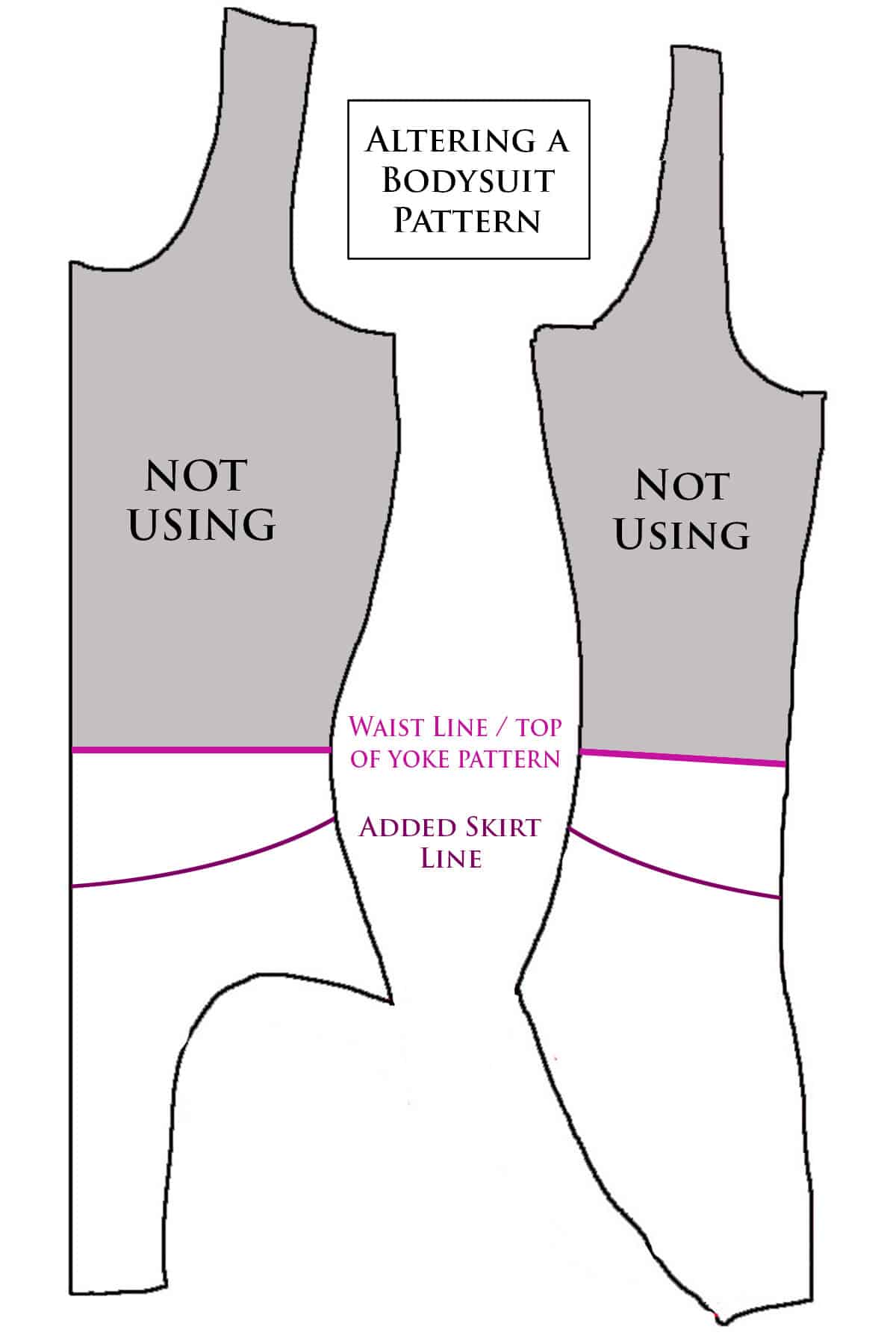
This will be a matter of personal taste - both in shape, and where you place it.
I recommend starting at the side seam - a couple of inches down from the natural waist - and gently curving it downwards towards the center front line.
Add your elastic allowance to the top edge of the new pattern, as described in the skating dress section.
Finally, add a seam allowance to all 4 pattern pieces at the skirt placement line. This is something that's not necessary when it's a dress pattern, as they've got the seam allowance built in*.
The amount of your seam allowance depends on the width of seam you usually use - I generally go about ¼".

* GENERALLY speaking, anyway. For the ones that don't - and expect you to cut your own as you go - you can do the same, with these edges. This is a rare case, though.
Make a trial skirt, and see how you like the placement / shape of the skirt line, adjust as necessary.



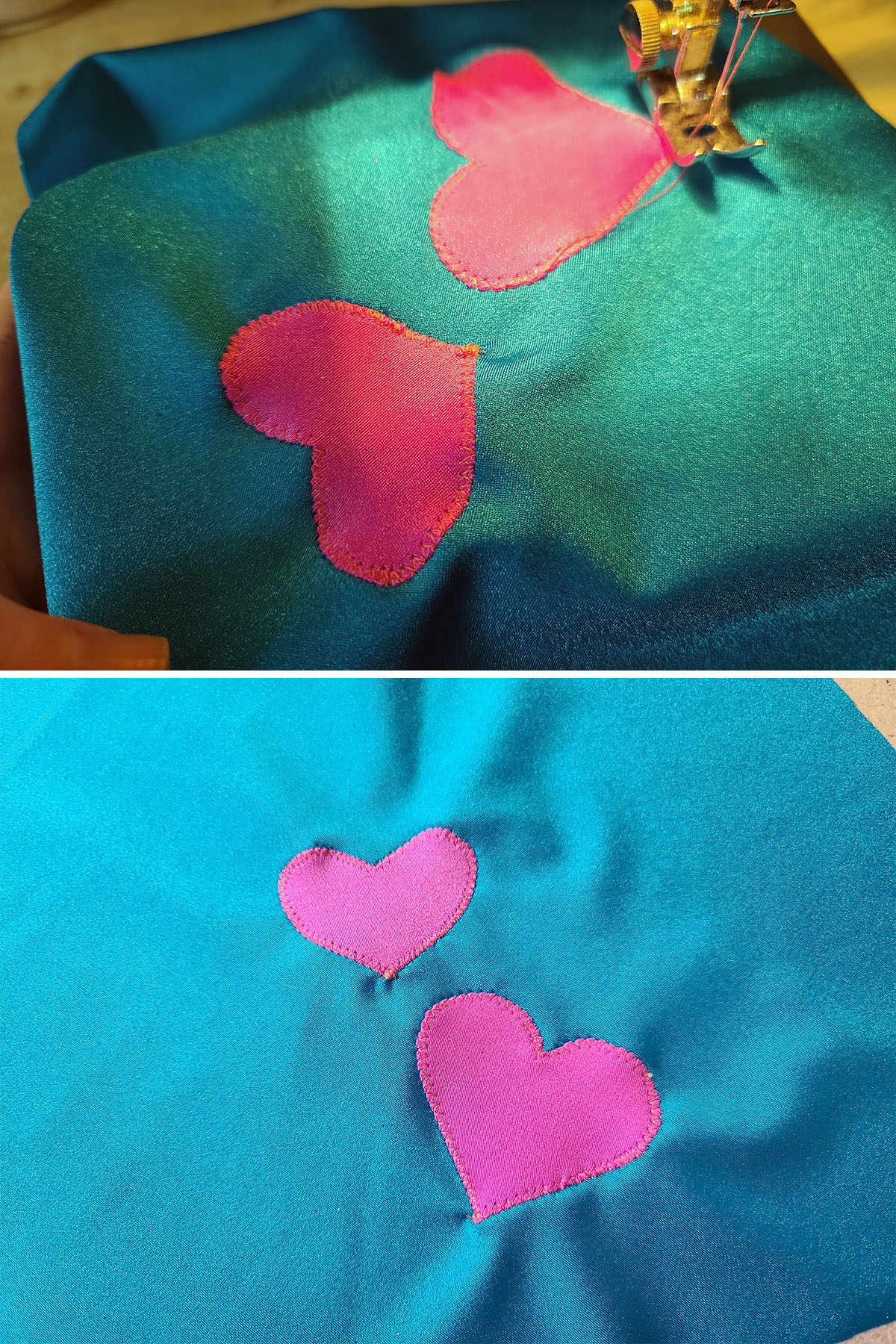
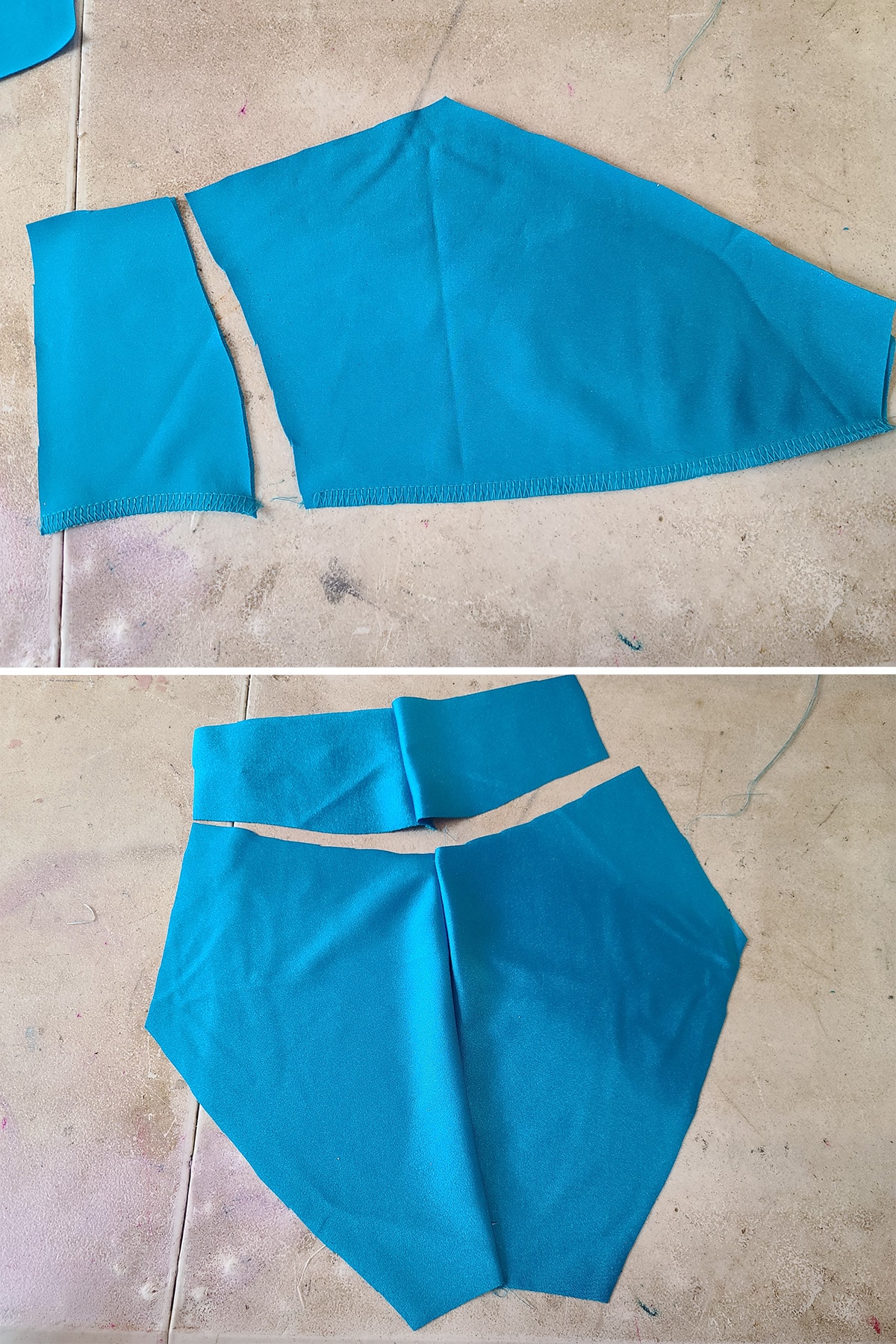
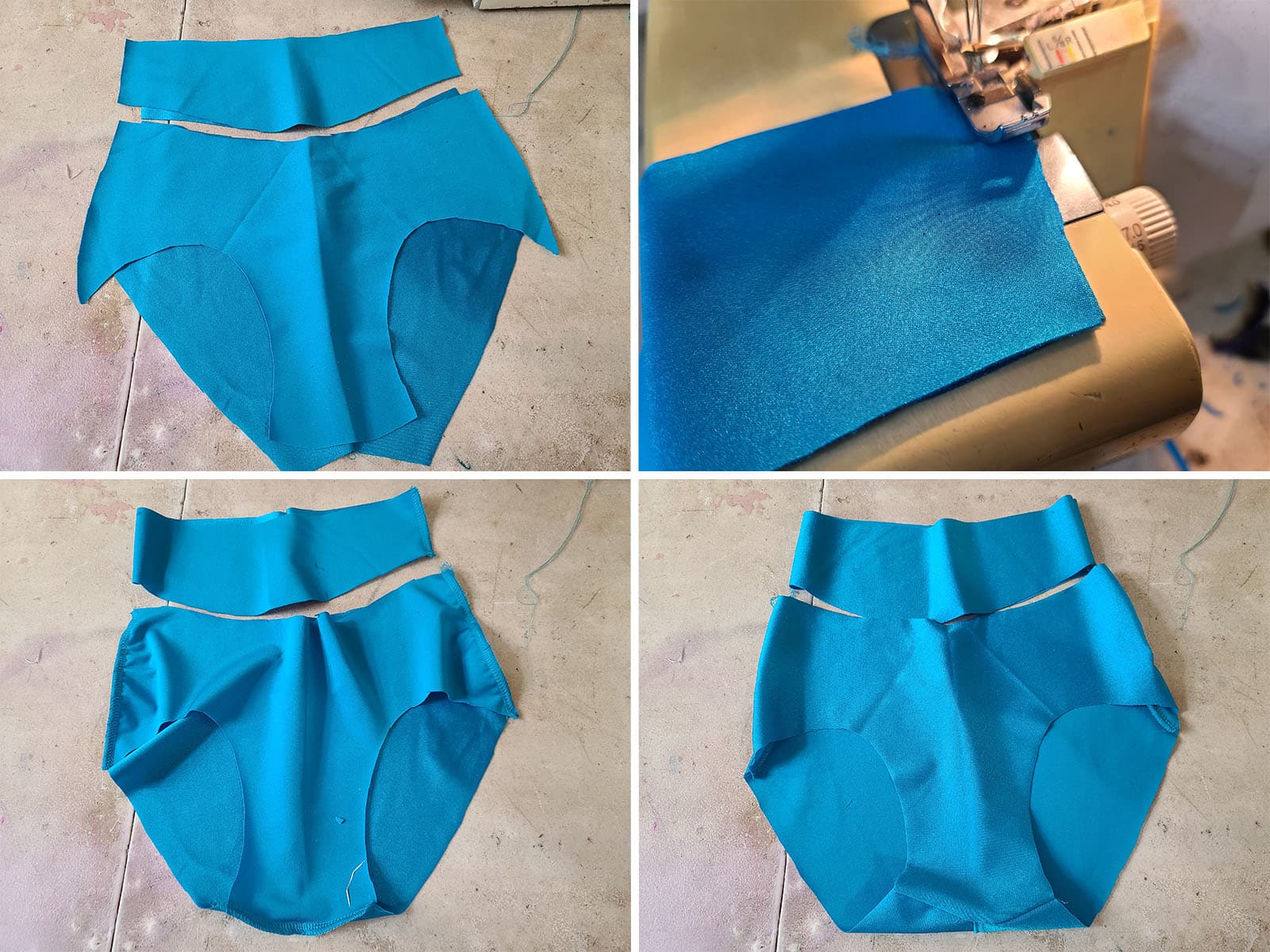

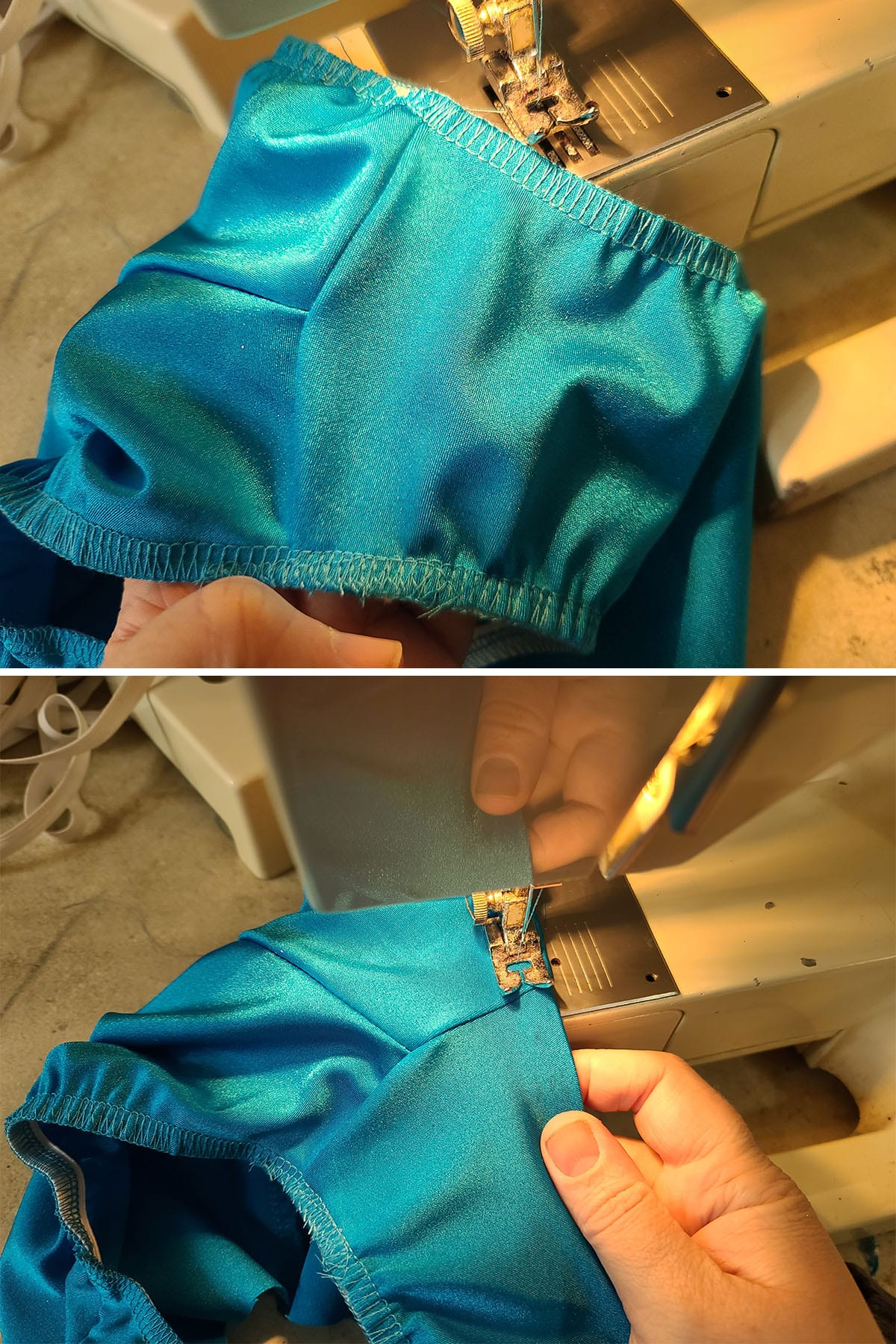
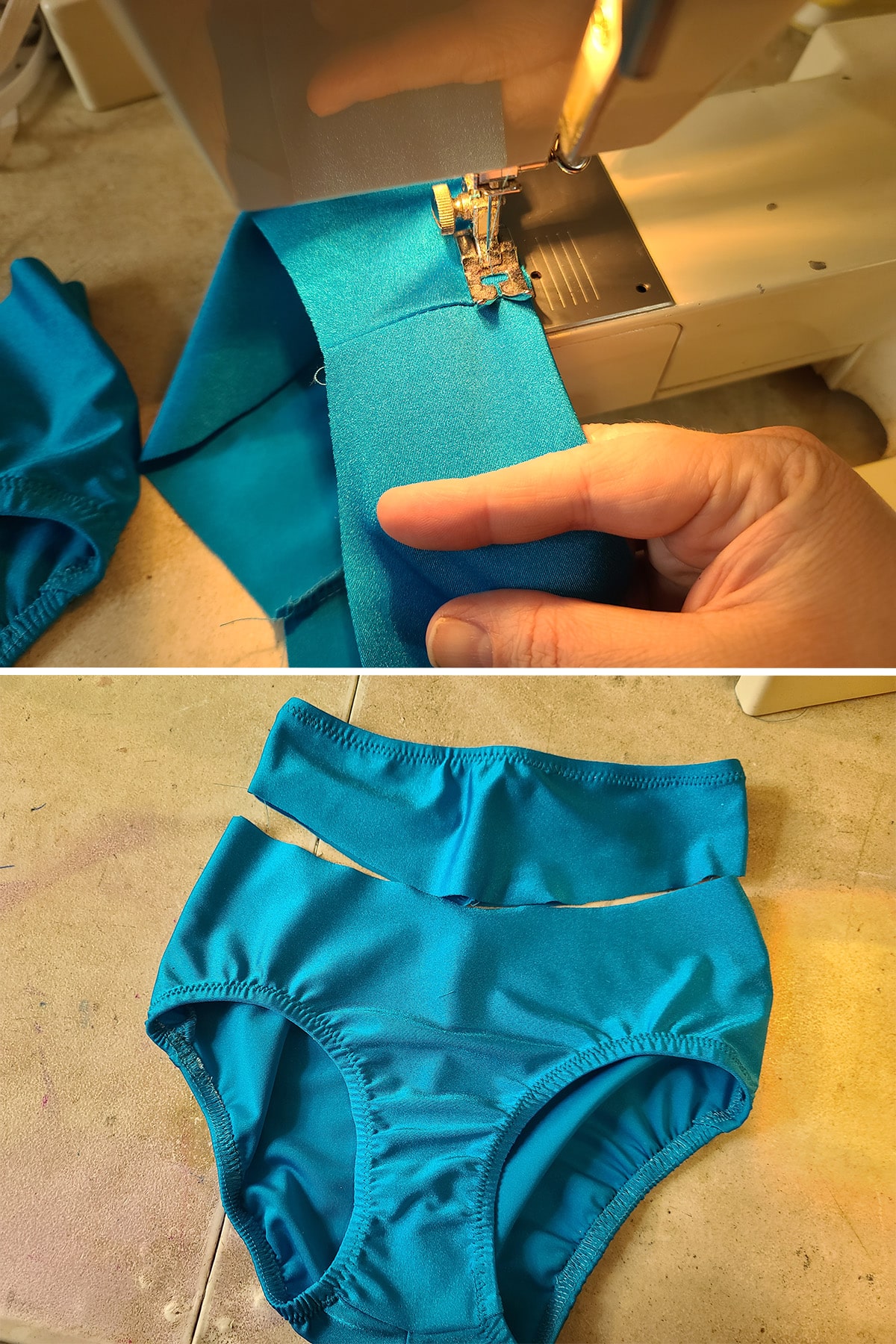
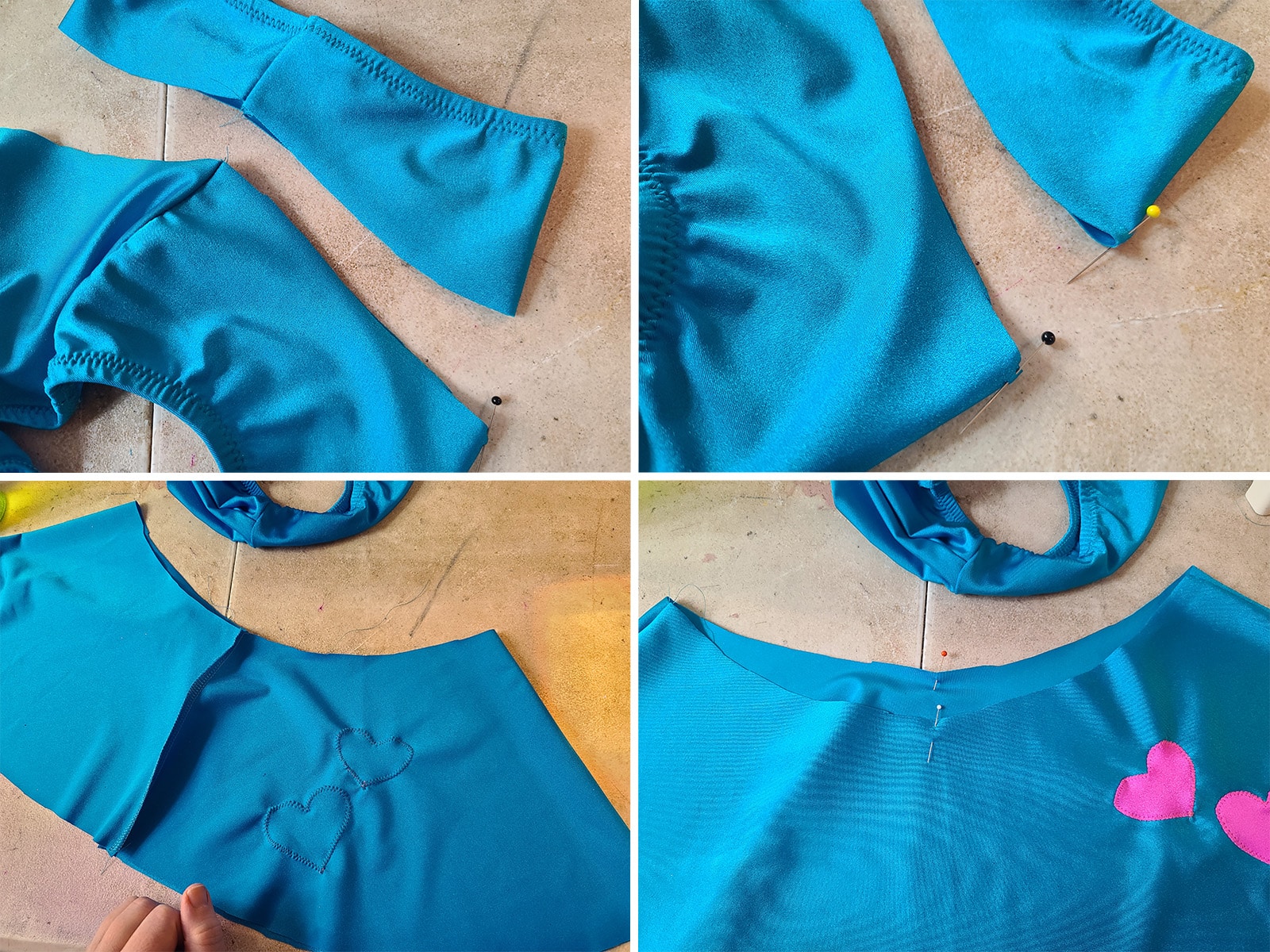








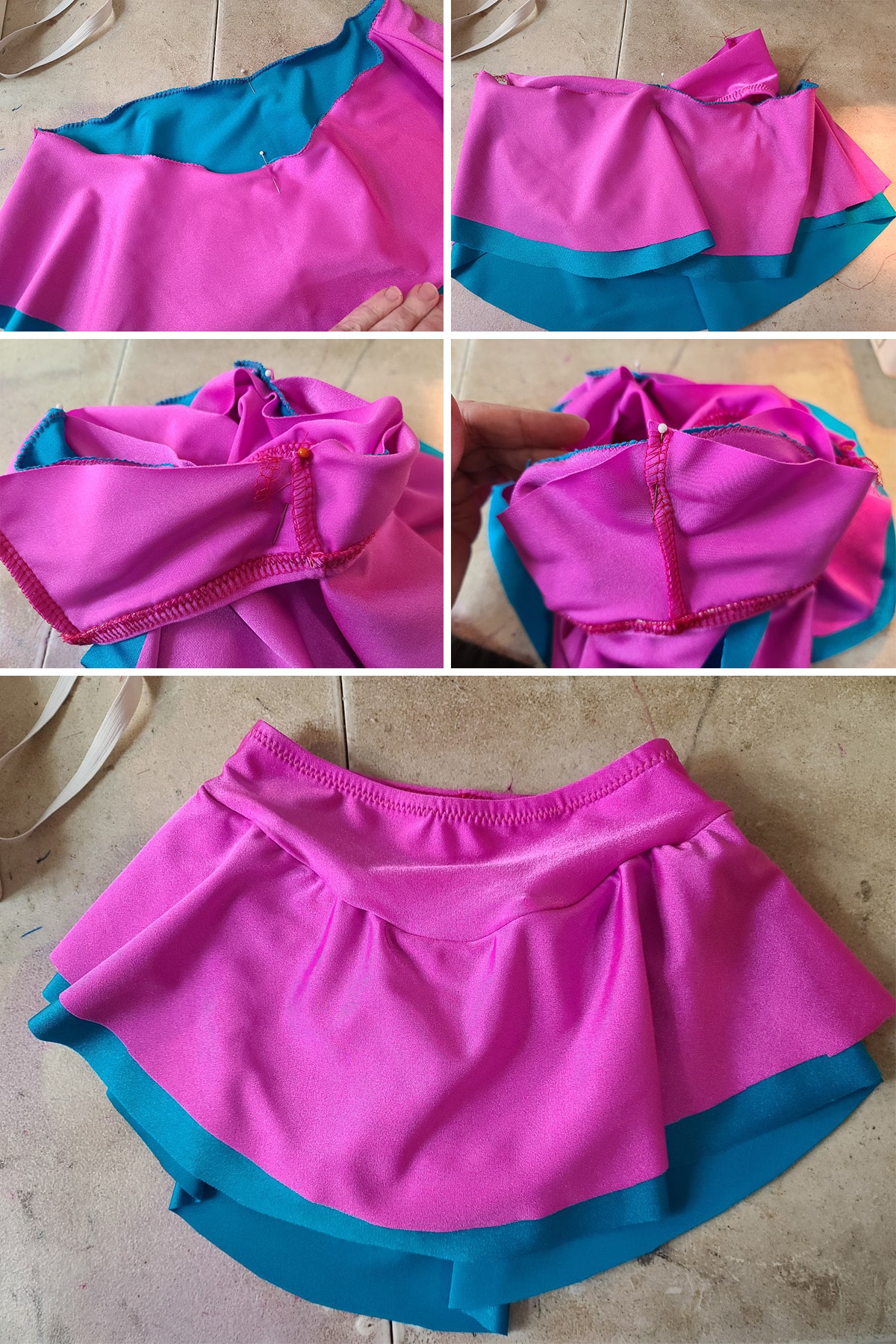
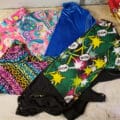
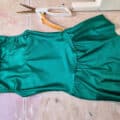
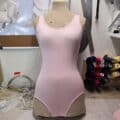
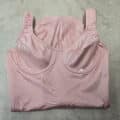
Leave a Reply